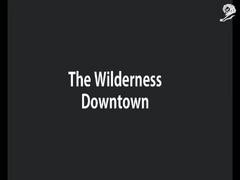Innovation > Innovation Lions
WEB LAB
GOOGLE CREATIVE LAB, London / GOOGLE / 2013
Awards:


Overview
Credits
Overview
ClientBriefOrObjective
Since its launch in 2008, Google’s Chrome browser has evolved and continues to push the potential of what you can do on the web. Browsers are no longer just portals to web pages; they are a lens through which we view and manipulate our built environment; our objects and possessions, our social experiences. We wanted to let people know about these features and set out to create tangible versions of invisible web technologies so people were able get their hands on them and learn how the web works, whilst experiencing the power of Chrome.
In collaboration with the London Science Museum, who are committed to educating people about the science that shapes our lives, we created Web Lab - an exhibition not bound to one geographical location, instead a first-of-its-kind global museum experience made accessible to the world online. Featuring 5 physical interactive experiments designed to bring to life the magic of the web; experienced physically live from the Science Museum in London, and digitally from anywhere in the world at chromeweblab.com.
In July 2012 Web Lab launched in beta, a world’s first for an exhibition and continues 24 hours a day, 7 days a week until summer 2013.
Implementation
Web Lab is the first major museum exhibition to integrate in-museum and online visitors with equal measure. The international audience of tourists, as well as thousands of school groups each year, makes London Science Museum the perfect venue for such an exhibition. The intention of Web Lab was to harness the extraordinary power of the modern web to inspire and educate in new and innovative ways. The major creative opportunity was to create a synthesized physical and virtual experience where people could share a sense of social presence and collaborate on creative activities while learning about how the web works.
The complexity of the challenge was amplified as not only did we set out to create 5 physical experiments that spanned the digital and physical worlds but we also had to ensure that they could last the test of time and run 24 hours a day, 7 days a week for an entire year. The website needed to provide creative queuing solutions to manage the extremely large number of online visitors using a limited set of in-museum physical experiments.
As a Chrome initiative Web Lab inherently showcased the power of the modern technologies supported by the browser. We harnessed a variety of technologies to create each of the 5 experiments from the use of WebGL for amazing real-time 3D graphics in ‘Data Tracer’, allowing visitors to see data travel across the internet’s vast network of servers, to the use of WebSockets in ‘Universal Orchestra’ allowing visitors to collaborate in real time to make music with people across the world. Through the experience of these advanced features visitors, both old and young, could truly appreciate the possibilities of the modern web and in doing this we hoped to truly ignite an interest in computing and the next generation of computer scientists.
Outcome
In July 2012 we launched Web Lab in beta, and since then it has been experienced by over 5.5 million online visitors from 196 countries and 300,000 museum visitors, resulting in 4.5 million user generated creations. Its success reinforces the power of computer science and technology as a means to inspire, educate, communicate and generate advocacy around Chrome technologies.
Web Lab pushes the boundaries of a conventional exhibition and truly demonstrates the possibilities of the modern web. Long term, we hope that Web Lab sets a new precedent for education in public spaces and how they are made more accessible to people from all over the world.
New architecture and design archetypes were created for this first-of-its-kind physical/digital collaboration. The design approach equally considers the experience of the space physically and the experience of it online.
In Spring 2013 we will be open sourcing the full hardware and software stacks of the on and offline experience so that other schools, museums and tech enthusiasts around the world can create their own versions of the experiments and Web Lab can live on beyond its time in the Science Museum.
More Entries from Innovation Lions in Innovation
24 items
More Entries from GOOGLE CREATIVE LAB
24 items


























